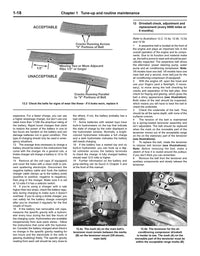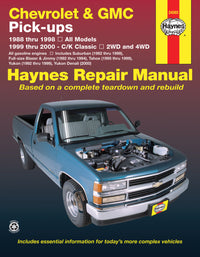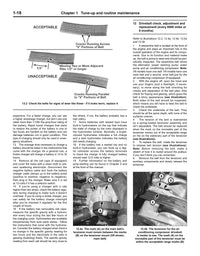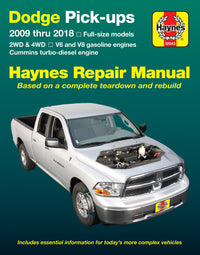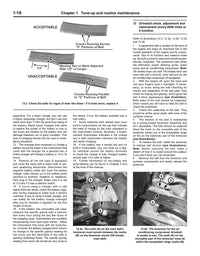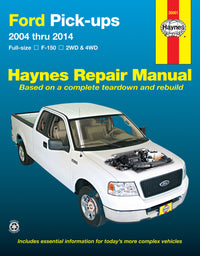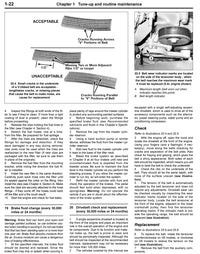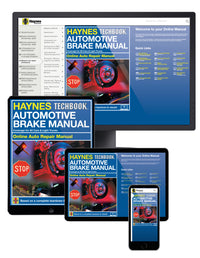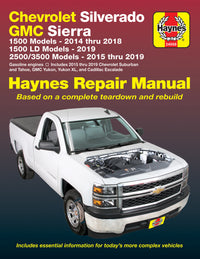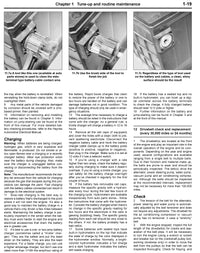Off-roading tests every inch of a Jeep Wrangler. If you plan to drive through rocky switchbacks or charge over mud-soaked trails, the terrain pushes your 4x4 harder than any city street ever will. That’s why routine checks and smart maintenance are necessary.
You don’t need a service bay or a dozen tools. You need to understand what parts take the most punishment and how to keep them in shape. At Haynes Manual, we’re laying out the most important 2018-2023 Jeep Wrangler preventive maintenance tips for trail-driven rigs. This is hands-on knowledge backed by years of Wrangler teardown and real-world testing.
2018-2023 Jeep Wrangler Preventive Maintenance Tips
Trail use hits your suspension, drivetrain, and fluids harder than any daily commute. Dirt, water, rock strikes, and sudden temperature swings introduce faster wear. If you treat your Wrangler like the trail weapon it is, you have to treat the maintenance just as seriously. Stick to the intervals and don’t ignore minor problems, as they can get expensive fast.
Off-roaders should go further than stock recommendations. Inspect everything more often. Add post-trail rituals to your routine, especially after water crossings or high-dust conditions. Suspension components and axle housings trap grime in places you can’t see at a glance.
2018-2023 Jeep Wrangler CV and Axle Care
Articulation-heavy trails twist your Wrangler’s CV joints to their limit. When those boots rip or clamps loosen, grease escapes, and grime gets in. That’s where early failure starts. After every serious trail session, inspect inner and outer CV boots for tears, leaks, or dried grease buildup. If grease has flung out, the joint’s already compromised.
Axle housings also demand attention. After water crossings or deep mud, check both front and rear differentials for signs of fluid contamination. Milky or frothy gear oil means water breached the seal and mixed with the lubricant. Drain it and refill with the right spec, which you’ll find outlined in the fluid charts near the start of the Manual.
2018-2023 Jeep Wrangler Suspension Check
Off-road driving chews through suspension components. Trail impacts, sharp drops, and aggressive articulation stress bushings, brackets, and fasteners in ways that everyday driving never will. Make suspension checks a post-trail ritual. Examine all control arms for cracks or bend marks. Look for play in the sway bar links. Scan for loose bolts or shifted bushings that throw geometry off.
If you’ve added a lift kit or oversized tires, check even more often. Chapter 10 of the Haynes Manual provides diagrams and factory torque specs to re-tighten every mount correctly. Pay extra attention to track bar mounts and upper control arm bushings, which absorb most of the impact energy on steep descents and hard landings.
2018-2023 Jeep Wrangler Undercarriage Cleanliness and Damage
Mud may look harmless, but it holds moisture, chemicals, and road salt that eat through metal. After every off-road run, hit the undercarriage with a pressure rinse. Focus on clearing debris from skid plates, frame rails, and suspension mounts. Once clean, go back through and inspect for fresh scrapes, bent brackets, or any component hanging lower than it should.
Skid plates can take abuse, but can press against the oil pan or transfer case once they deform. Look for signs of compression or cracking.
2018-2023 Jeep Wrangler Fluid Inspection
Fluid stress on the trail goes far beyond what factory schedules account for. Slow crawling, long climbs, and hot summer trail days spike transmission and transfer case temps. That kind of thermal load breaks fluid down fast. Look for dark fluid or burnt smells after long rides for automatics. On the other hand, monitor for gear grind or hard shifting signals and lubricant breakdown on manual transmissions.
Chapter 7C of the manual walks through transfer case fluid checks and replacement intervals. Brake fluid deserves just as much attention. Steep downhill runs heat it up fast; if water contamination is present, fade becomes a real risk. If the fluid looks dark or cloudy, flush it. Don’t wait.
2018-2023 Jeep Wrangler Electrical Systems and Air Locker Components Check
Water and dirt target every weak point in your Wrangler’s electrical harness. After every trail day, open the hood and check the alternator, ignition coil, and fuse block for moisture or grime. Corrosion around terminals can short sensors and kill your spark output.
If your build includes air lockers, test the system for a few minutes post-trail. Make sure the compressor fires, the switches respond, and the air lines haven’t kinked or popped off under load. Mud and rock hits around the differential housing, often pinching lines or cracking fittings.
Keep Chapter 12 and Chapter 13 of the Jeep Wrangler manual close when troubleshooting wiring or locker connections. They provide full circuit maps and routing diagrams to save hours during diagnostics.
Essential Maintenance for the 2018-2023 Jeep Wrangler
Every off-road trip leaves a mark. The aim is to catch those marks early before they become expensive repairs or mid-trail failures.
We created our manuals for Jeeps to give off-roaders exactly what they need. Inside, you’ll find teardown-level access to drivetrain systems, fluid charts, electrical diagrams, and torque specs matching your build. It’s a tool that helps you keep control of your vehicle's condition, one trail day at a time.
Ready to level up your trail service game? Get your copy of the Haynes Manual for the 2018-2023 Jeep Wrangler and take ownership of every mile your Wrangler conquers.






